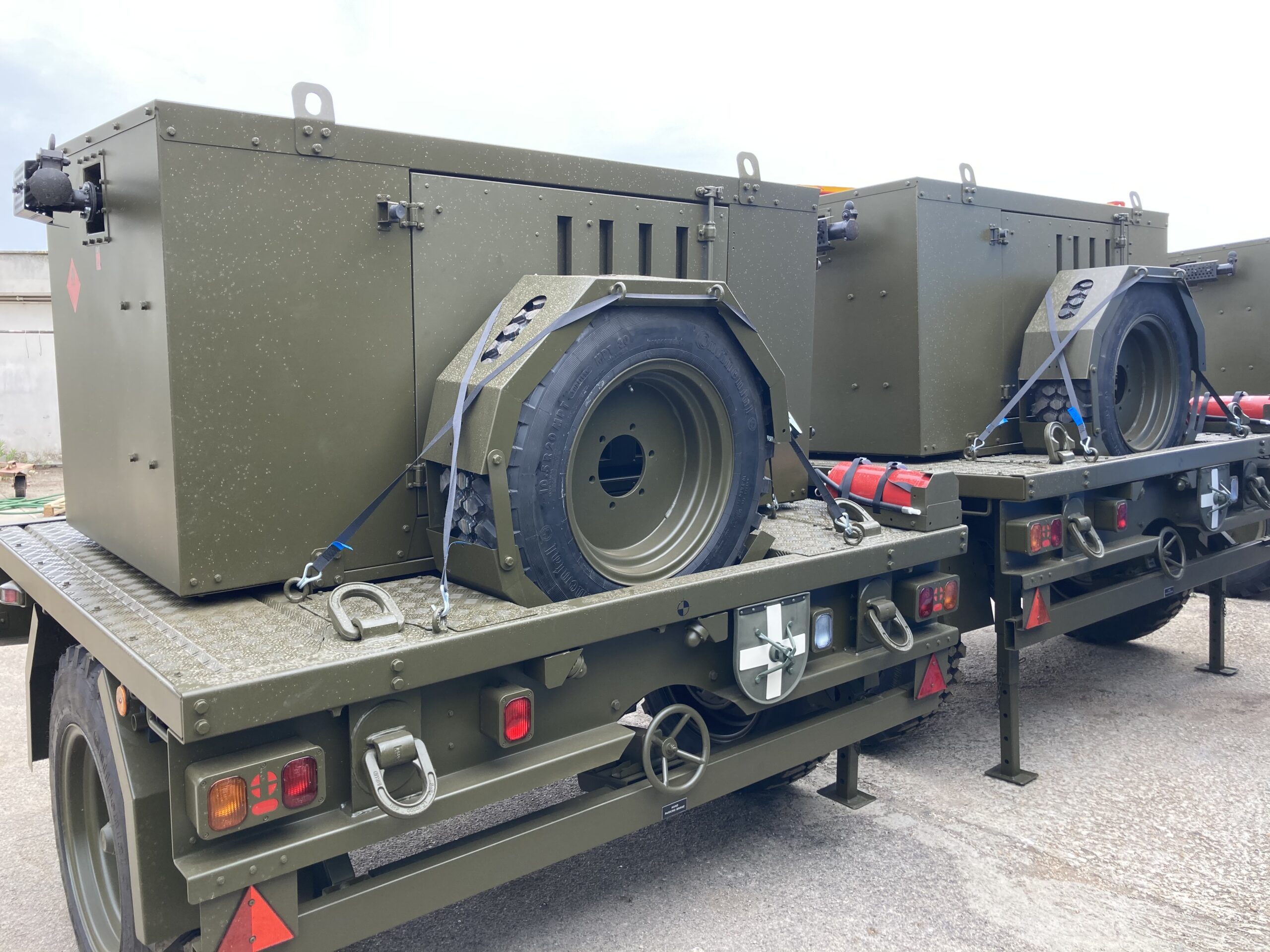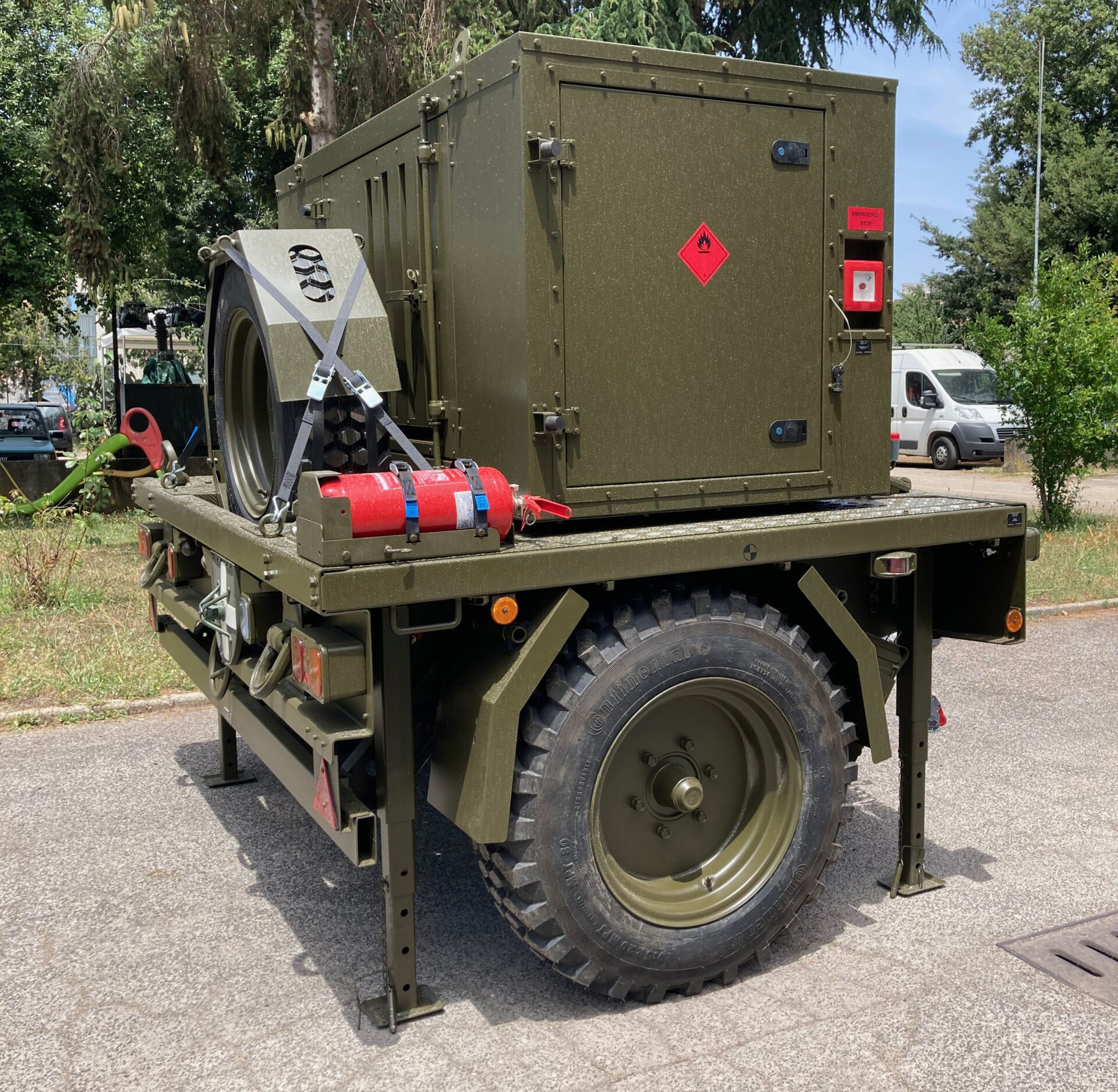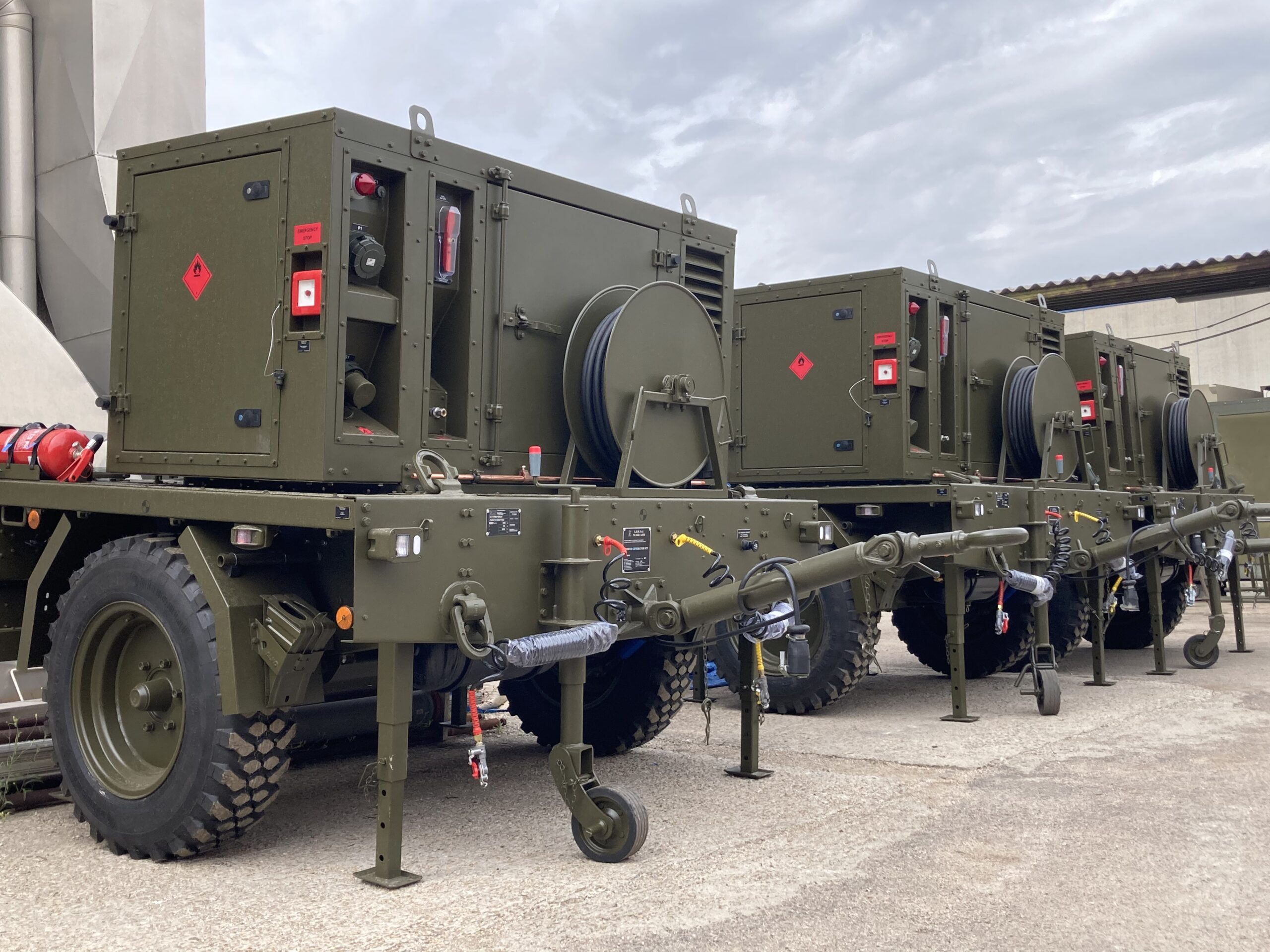GENERAL INFORMATION
 Power generator PGS
Power generator PGS
PGS withstand and function under the outdoor environmental conditions defined in ASTM E1925-10.
Temperature
The PGS can withstand temperatures between -44 °C and +49 °C. The operating temperature of the PGS must be between -30 °C and +49 °C. The PGS must be able to withstand rapid temperature fluctuations of up to 13.4 °C/min while being switched on. When moved from an open environment to an acclimatised area, the PGS withstands the maximum expected temperature change of 63 °C.
Wind
When bound, the equipment withstands winds of up to 160 km/h in steady state, with gusts of up to 190 km/h.
Dust and Sand
The external moving parts of the equipment in transport or operational mode are designed to resist the effects of blown sand. The external moving parts are designed to operate and withstand particle concentrations of 2.19 g/m³ with a wind speed of 8.9 ± 1.3 m/sec without deterioration. The particles are between 150 μm 1000 μm in size. The relative humidity must be less than 23%. The design prevents dust and sand from being blown into the structure.
Ice and snow
The structure is designed so that the accumulation of ice and/or snow does not damage, deform or impede the operation of the equipment. The equipment does not allow water to accumulate in pockets, folds, crevices or depressions that could cause structural damage in the event of freezing.
Altitude
The facilities are capable of operating effectively in a variety of terrains at altitudes up to 3,000 m above sea level. In order to be transportable by air, the equipment is able to withstand unpressurised or unheated transport up to an altitude of 12,000 m without any additional preparations beyond those required for transportation.
Humidity
All equipment withstands daily exposure to up to 97% relative humidity for 20 hours and exposure to 100% relative humidity (with condensation) for 4 hours.
Marine corrosion
The PGS is fully serviceable when exposed to a salt environment as specified in ASTM E1925-10. All hardware, including fasteners, jacks and seals, show no signs of corrosion or degradation after 96 hours of exposure to this simulated environment.
Ultraviolet
The effects of ultraviolet radiation do not significantly degrade or impair the functionality of the components or materials of the equipment over its expected lifetime.
Vibrations
5-20 Hz 0.05 g²/Hz and 20-150 Hz -3dB/Oct (1.7g RMS) random vibration conditions for operation, transport, storage and handling.
Shock
20 g, 11 ms, half-sinusoidal mechanical shock for operation, transport, storage and handling.
Impact
40 g, 6 ms, 1000 pulses for transport, storage and handling; 25 g, 6 ms, 1000 pulses for storage.
EMI shielding requirements (in accordance with MIL-STD-461G)
- Magnetic field: 60 dB at 10 kHz;
- Electric field: 60dB across the entire range from 100kHz to 30MHz (attenuation of radiated and induced fields > 60dB);
- Electric field: 60dB across the entire range from 30MHz to 10GHz (attenuation of radiated fields > 60dB);
The acoustic noise level of the PGS at full power does not exceed 57 dB (A) measured at a distance of 7 m (in accordance with ISO 1996-1:2003).
The PGS can be transported by air via C130 aircraft, by road, by rail and by sea.
The PGS can be disassembled from the trailer and reassembled on a truck bed or other rigid surface for transport and/or operation.
The genset is certified according to current European emission legislation - compliant with EU Stage IIIA 2007.
The PGS engine has a variable speed controlled by a microprocessor.
The engine is diesel-ready and capable of running on at least the following fuels: diesel, DL-1, DL-2, JP-5, JP-8.
The PGS can be mounted on vibration-isolating elements and must include a suitable lifting point for movement.
All cables may be transported on the respective generator trailer.
Towing Trolley:
Towing eye
The towing hitch is equipped with a NATO towing eye. The height above the ground of the towing level must be adjustable between 75 cm and 125 cm in accordance with STANAG 4101. The towing hitch allows the maximum possible articulation between tractor and trailer in accordance with STANAG 4101 and DIN74050.
Support wheel
The trailer is equipped with a retractable support wheel, which is very rigidly attached to the towing hitch. In addition, the height of the support wheel must be continuously adjustable when in the upright position.
The braking systems are constructed in accordance with EEC regulations (Council Directive 71/320/EC).
Design of braking devices and STANAG 2604.
Trailer suspension is progressive independent with one telescopic shock absorber per wheel. Two wheels + one spare wheel above the platform. The rims are 9×20 and the tyres 10.5/10-20.
The trailer lighting is 24 V DC and must consist of normal service lighting and emergency convoy lighting, as well as a 12-pin socket meeting the requirements of the latest edition of STANAG 4007.
The normal service/emergency lights comply with European Directive 76/756/EEC.
The lights are visible at a minimum horizontal distance of 50 metres;
The lights are not visible in a horizontal direction for more than 300 m (with a tolerance of 50 m);
The intensity of the lights is such that it is not possible to detect the trailer from an altitude of more than 150 m due to the reflection of the lights on the road surface.



